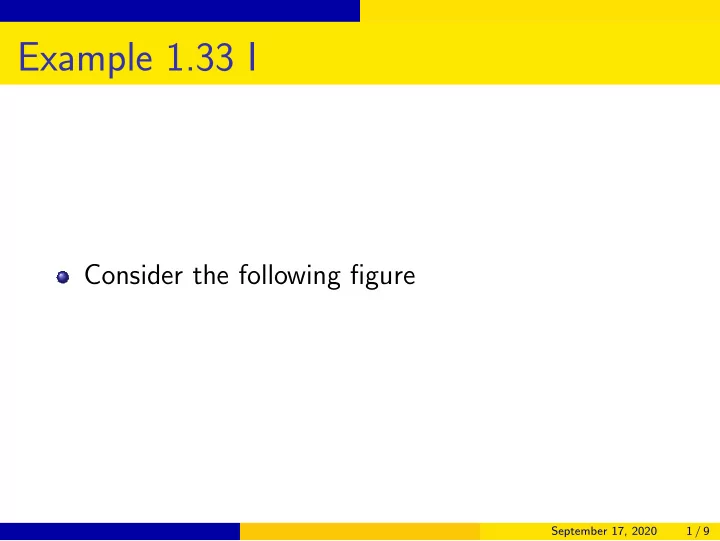

Example 1.33 I Consider the following figure September 17, 2020 1 / 9
Example 1.33 II 0 ǫ 0 ǫ 0 0 0 September 17, 2020 2 / 9
Example 1.33 III For this language, Σ = { 0 } . This is called unary alphabets What is the language? { 0 k | k multiples of 2 or 3 } September 17, 2020 3 / 9
Example 1.35 I Fig 1.36 q 1 a b ǫ q 2 q 3 a a , b Accept ǫ , a , baba , baa can be accepted But babba is rejected September 17, 2020 4 / 9
Example 1.35 II See the tree below q 1 q 3 b q 2 a q 2 q 3 b q 3 This example is later used to illustrate the procedure for converting NFA to DFA September 17, 2020 5 / 9
Definition: NFA I ( Q , Σ , δ, q 0 , F ) δ : Q × Σ ǫ → P ( Q ) P ( Q ): all possible subsets of Q Σ ǫ = Σ ∪ { ǫ } P ( Q ): power set of Q “power”: all 2 | Q | combinations Q = { 1 , 2 , 3 } P ( Q ) = {∅ , { 1 } , { 2 } , { 3 } , { 1 , 2 } , { 1 , 3 } , { 2 , 3 } , { 1 , 2 , 3 }} September 17, 2020 6 / 9
Example 1.38 I 0 , 1 0 , 1 0 , ǫ 1 1 q 1 q 2 q 3 q 4 Q = { q 1 , . . . , q 4 } Σ = { 0 , 1 } Start state: q 1 F = { q 4 } δ : September 17, 2020 7 / 9
Example 1.38 II 0 1 ǫ { q 1 } { q 1 , q 2 } ∅ q 1 { q 3 } ∅ { q 3 } q 2 ∅ { q 4 } ∅ q 3 { q 4 } { q 4 } ∅ q 4 Note that DFA does not allow ∅ September 17, 2020 8 / 9
N accepts w I First we have that w can be written as w = y 1 . . . y m where y i ∈ Σ ǫ A sequence r 0 . . . r m such that r 0 = q 0 1 r i +1 ∈ δ ( r i , y i +1 ) 2 r m ∈ F 3 So m may not be the original length (as y i may be ǫ ) September 17, 2020 9 / 9
Recommend
More recommend